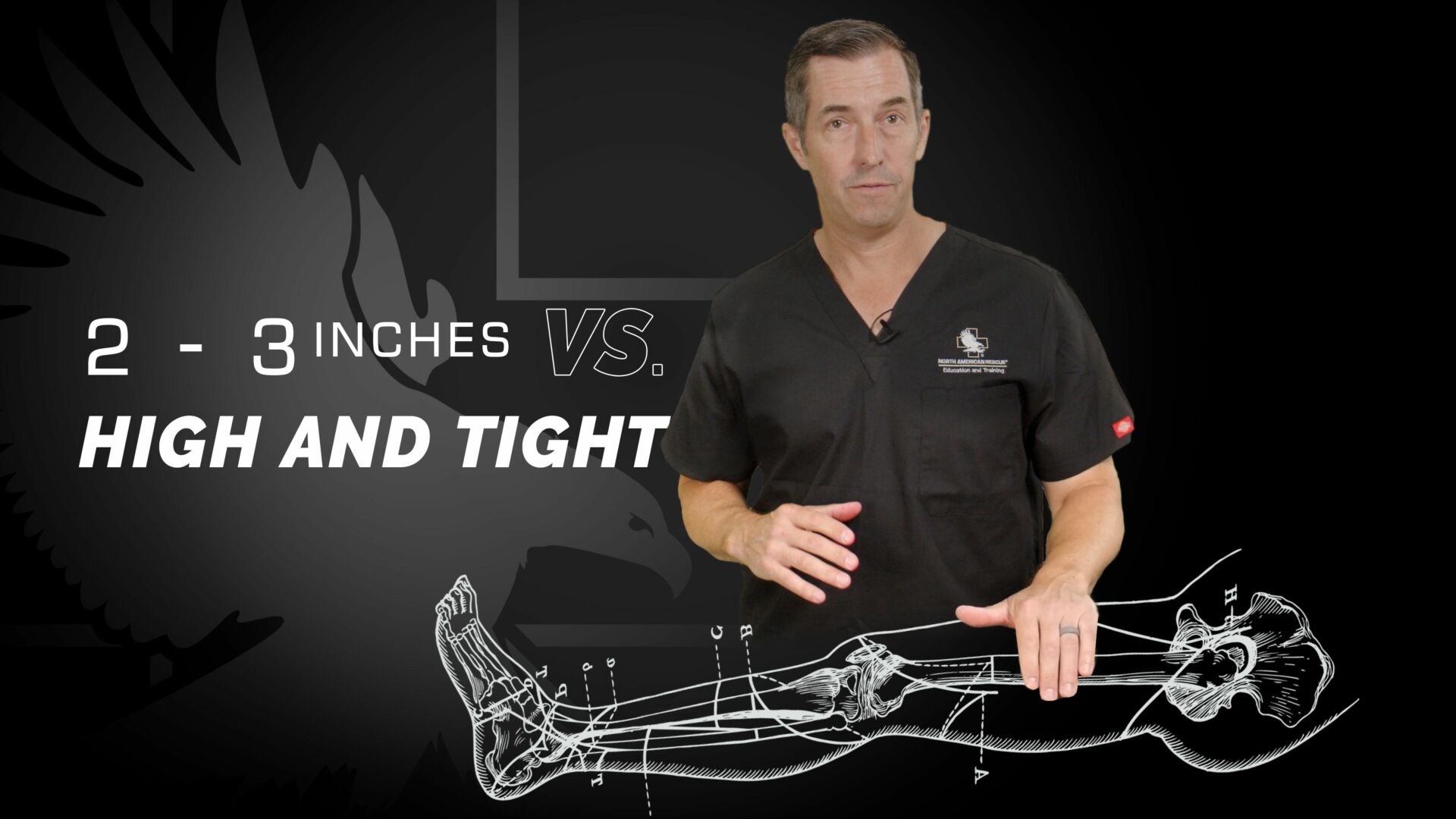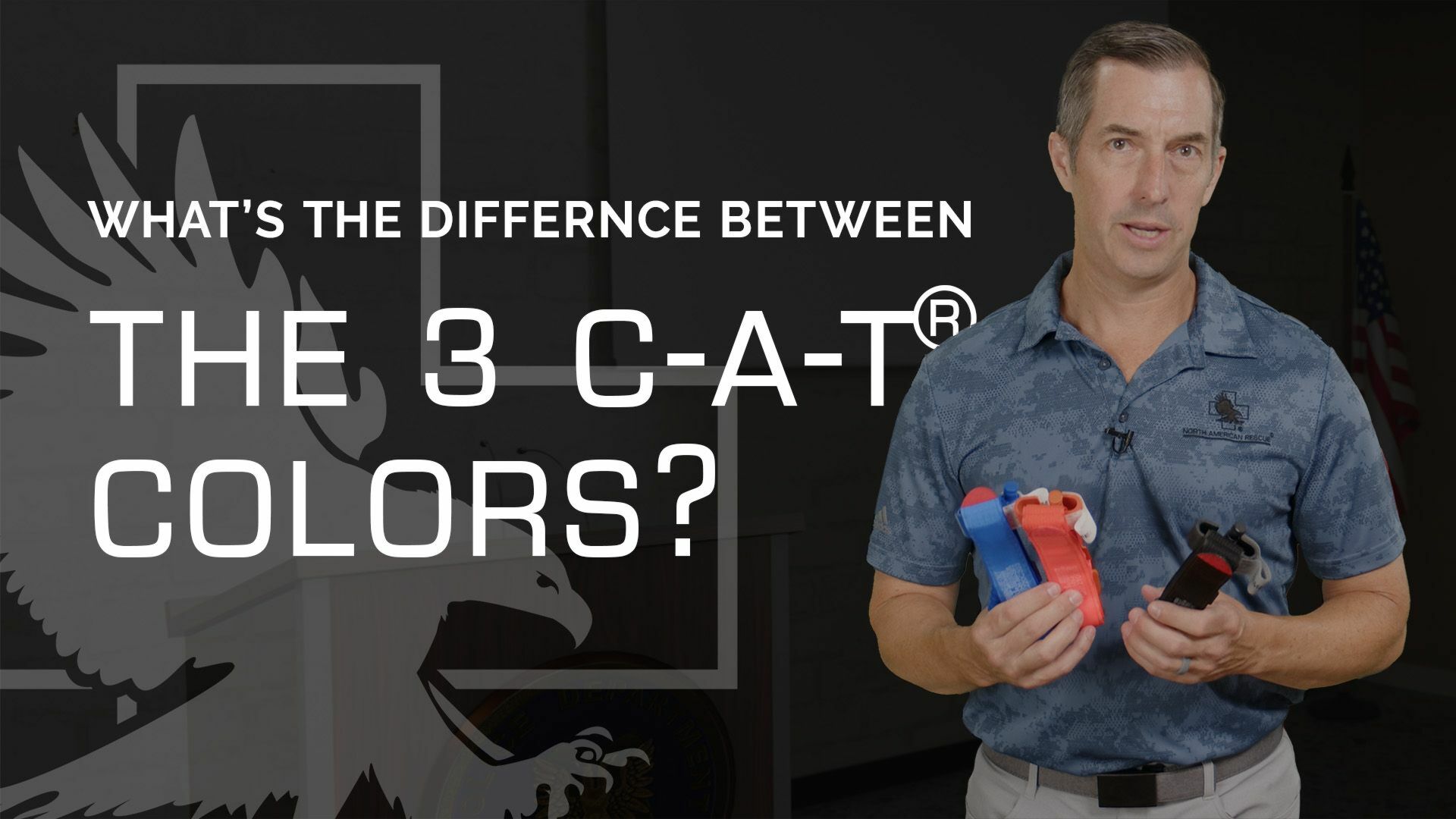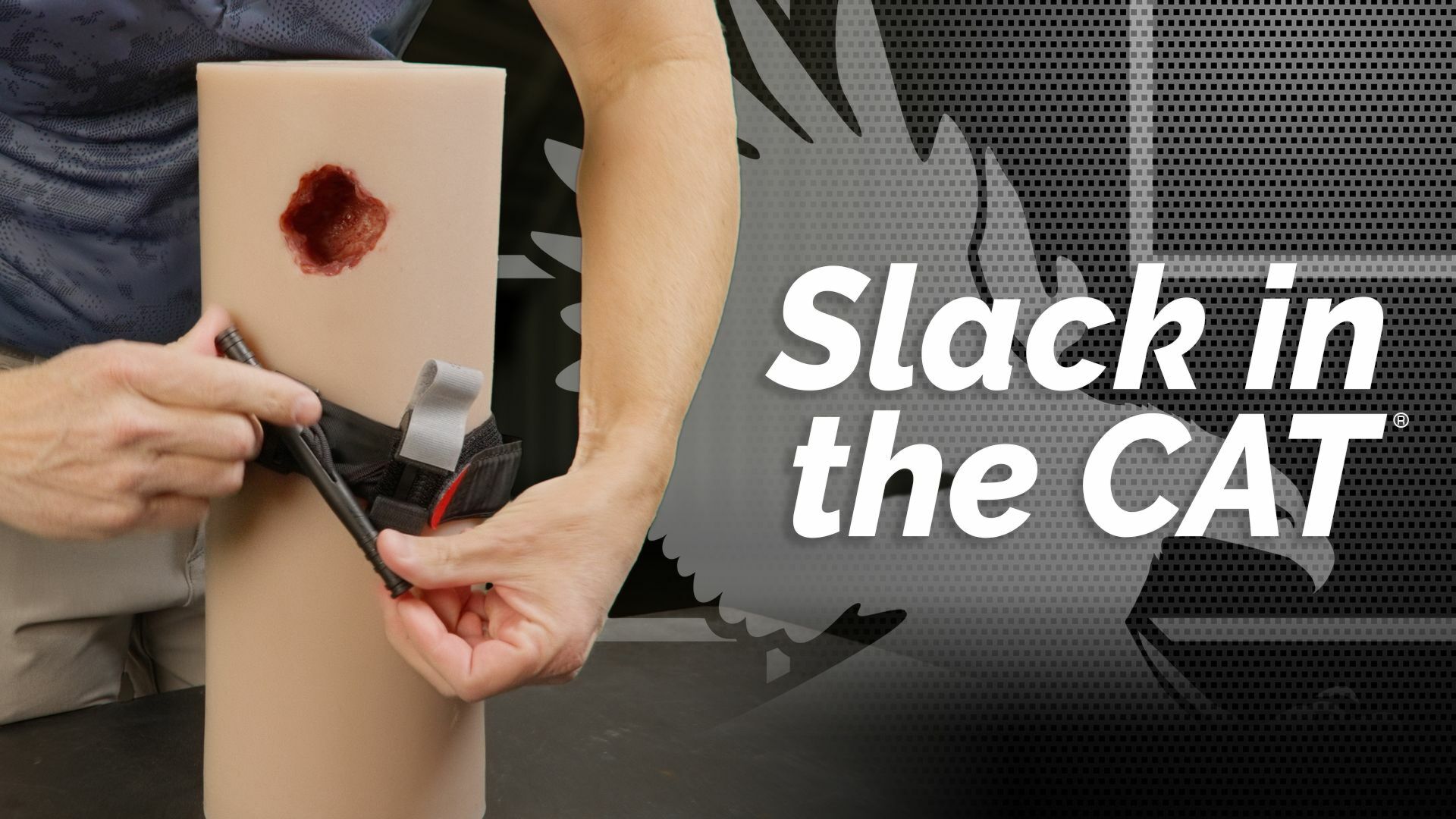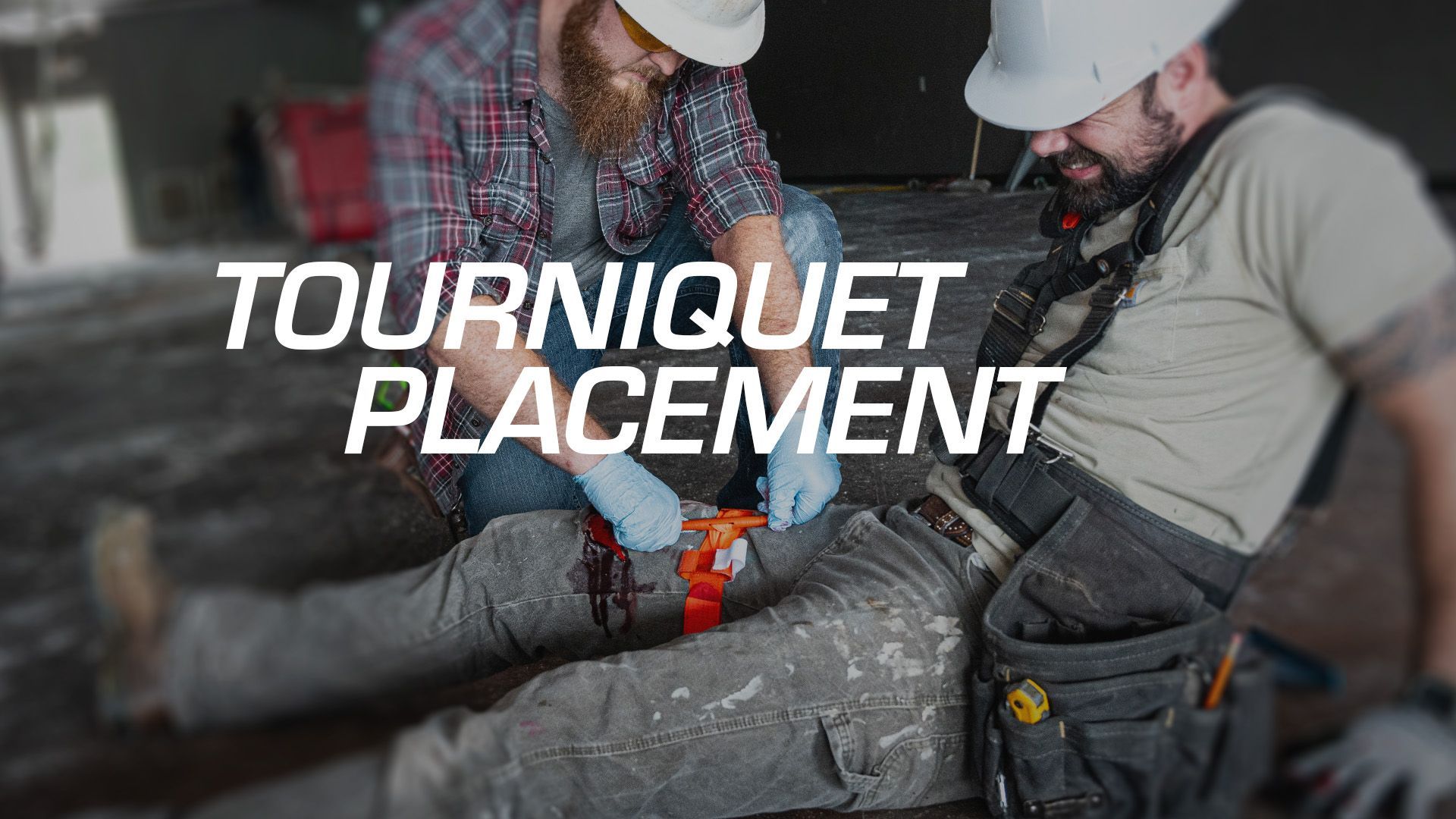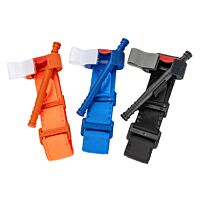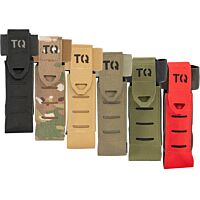High and Tight vs. Two to Three Inches Above: Where Should You Apply a Tourniquet?
Hey guys, Doc Miles at North American Rescue. So today we're going to talk about everybody's favorite topic, high and tight versus two to three inches above a wound and where should you apply a tourniquet.
2-3 Inches above the wound
Two to three inches above is just what it sounds like. I'm going to go find my highest wound. And I'm going to go two to three inches above that. And if I can successfully place a tourniquet, then I'm in a good location to do so. So that's a two to three inches above. Now you might say that's getting a little too close to the knee. So then fine. I can go above the knee again, avoiding Hunter's canal. And I don't necessarily need to go super high and tight right now.
High and Tight
On the other side of that is a high and tight application. So a high and tight application means I go as high up on the thigh as I possibly can, and then I tighten that tourniquet down until I've got hemorrhage control. On the upper extremity, that's going to be up in your armpit, up in your arm, as high as you possibly can get. That's going to be a high and tight application.
Advantages of Two to Three Inches Above
Let's talk about reasons to do two to three inches above versus high and tight. And I'll give you an example. Say this patient over here, we can ignore this one for now, but say they had an amputation of the foot. Well, there is no reason to apply a tourniquet up high on the thigh and stop perfusion of the entire leg. Just to control bleeding down here. Tourniquets work great on two bone compartments. If you don't believe me, look up the literature. There's a great article that I talked about by Colonel Craig and actually they're more successful.
So why is that? Well, if you place a tourniquet on the thigh, especially in a larger individual, that takes a large amount of pressure for a single tourniquet to occlude that femoral artery and those arteries down. So a lot of times it takes two tourniquets to successfully place it on when you're placing it high and tight on the lower extremity. The other advantage is that I'm perfusing more of the leg. So that's going to lead to decrease risk of a neuropathy. That's going to lead to decrease, uh, incidents of compartment syndrome. And overall, you're probably going to have a better outcome for that patient because you're only stopping bleeding in the area that it needs to be.
Two to three inches above the wound is still recommended by the American College of Surgeons for Stop the Bleed. It's recommended by the Committee on Tactical Combat Casualty Care. It's recommended by the Committee on Tactical Emergency Casualty Care. Again, if the situation permits.
Advantages of High and Tight
So advantages of high and tight. You can do it without thinking about where the injury is. You're not going to place that tourniquet too low and have an injury that tracks up. So there are some advantages to going high and tight.
So if you are untrained in tourniquet use, you're not familiar with tourniquets, or you're just nervous about using tourniquets, but you know how to place a high and tight. Then that is fine, especially if you have a quick evacuation. Now, if you've been trained more in tourniquet use and hemorrhage control, um, maybe you've done a stop the bleed course, maybe you're a medic, then what you're going to want to do is really look at the injury.
When to Use Two to Three Inches Above vs. High and Tight
If you're in a situation where you are in care under fire, or an active ongoing threat, then I would place that tourniquet high and tight because that probably means you don't have time to do a thorough assessment and really check where the bleeding is coming from. Now, if you're in a situation and you have good light and you can tell where the source of bleeding is and you're not in an active threat, what you want to do is place that two to three inches above the wound.
The advantages to placing a tourniquet two to three inches above a wound are magnified as that casually has to sit longer. So if you're going to sit on that casually for a while, then you're really going to want to think through that tourniquet placement. It loses the importance as you have quicker evacuation time.
So I got it. If you got one on high and tight and EMS is in route, you're enroute to the hospital. Go with what you got. Absolutely fine. But don't overlook the advantages of going two to three inches above the wound for hemorrhage control.

